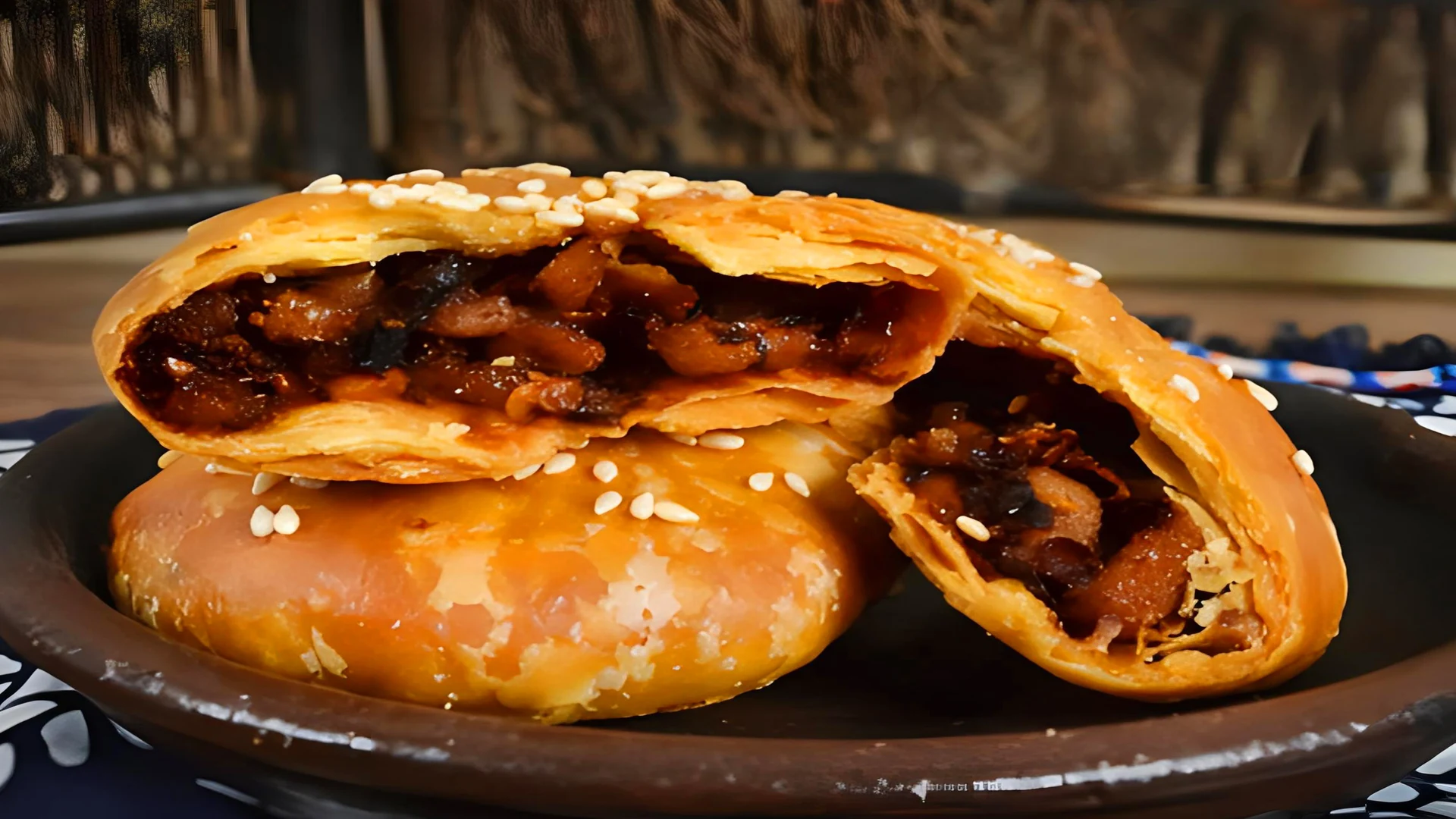The Art of Huangshan Baked Scones: A Culinary Journey into the Heart of Anhui
Introduction
As a culinary professional, I am often drawn to the rich tapestry of regional delicacies that make up the diverse landscape of Chinese cuisine. One such gem, the Huangshan Baked Scone, hails from the picturesque city of Huangshan in Anhui Province. Known for its unique appearance and rich cultural significance, this traditional snack is a testament to the ingenuity and culinary heritage of the people of Anhui.
Origin and Cultural Background
The Huangshan Baked Scone, with its distinctive “crab shell yellow” appearance, is deeply rooted in the history of the徽商 (Hui merchants), who were known for their extensive trade networks and influence in ancient China. These merchants, while traveling, would carry tea and snacks with them, and the Huangshan Baked Scone became a staple of their provisions. It is said that the scone’s creation was inspired by the need for a portable, long-lasting, and flavorful food that could accompany them on their journeys.
Ingredients and Preparation
The Huangshan Baked Scone is a marriage of simple yet exquisite ingredients. At its core, it consists of a filling made from finely chopped 梅干菜 (dried plum vegetables), which are sautéed with a generous amount of 肉馅 (minced pork), seasoned with a blend of traditional Chinese spices to enhance the flavors. The dough is made from a mixture of flour, water, and a touch of lard, which gives the scone its flaky texture.
The art of making these scones is a非物质文化遗产 (intangible cultural heritage), passed down through generations. The dough is rolled out thin, filled with the savory mixture, and then folded and sealed to create a round, flat shape. The scones are then brushed with a layer of egg yolk to achieve that signature golden hue and baked to perfection.
Taste and Texture
The taste of a Huangshan Baked Scone is a symphony of flavors. The outer crust is crispy and flaky, reminiscent of a well-made pie crust, while the inside is tender and packed with the rich, umami flavors of the seasoned meat and dried plum vegetables. Each bite is a balance of sweet, savory, and slightly spicy, with the distinct aroma of the lard and spices permeating every mouthful.
Appearance Description
Visually, the Huangshan Baked Scone is a work of art. The scone’s surface is dotted with the intricate patterns left by the crimping of the dough, giving it a rustic, handcrafted appeal. The golden-brown color, achieved through the application of egg yolk, is reminiscent of the sun setting over the Huangshan peaks, hence the nickname “crab shell yellow.” The scone’s round shape and even thickness make it a perfect bite-sized treat that is both pleasing to the eye and the palate.
Representative Dishes and Cuisine
While the Huangshan Baked Scone stands alone as a delectable snack, it can also be incorporated into a variety of dishes. It pairs beautifully with a cup of 黄山毛峰 (Huangshan Maofeng) tea, a local green tea known for its delicate flavor and aroma. The scone can also be served as an accompaniment to a traditional Anhui meal, adding a touch of local flavor to the dining experience.
Culinary Features
The Huangshan Baked Scone is a culinary ambassador of Anhui’s rich history and culture. Its unique flavor profile,非遗技艺 (intangible cultural heritage), and the story behind its creation make it a true delicacy. It represents the ingenuity of the Hui merchants and the adaptability of Anhui cuisine, which has evolved over centuries to cater to the tastes of travelers and locals alike.
Conclusion
As a food professional, I am always in awe of the Huangshan Baked Scone’s ability to capture the essence of Anhui’s culinary traditions in a single bite. It is not just a snack but a journey through time, a taste of history, and a celebration of the art of baking. The Huangshan Baked Scone is a testament to the enduring legacy of Anhui’s cuisine and a delicious reminder of the importance of preserving and cherishing our culinary heritage.
